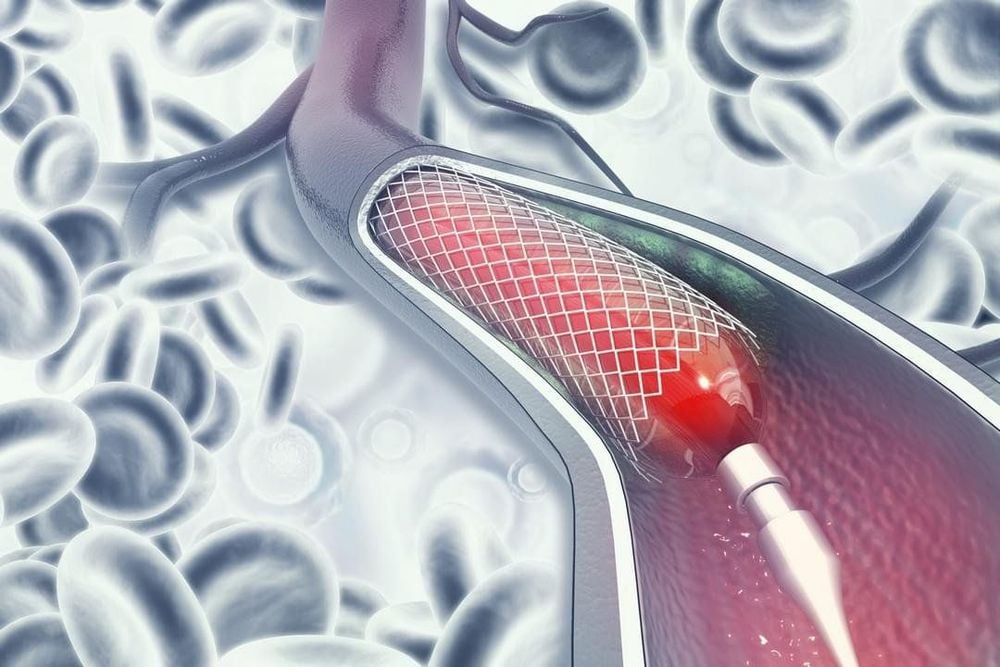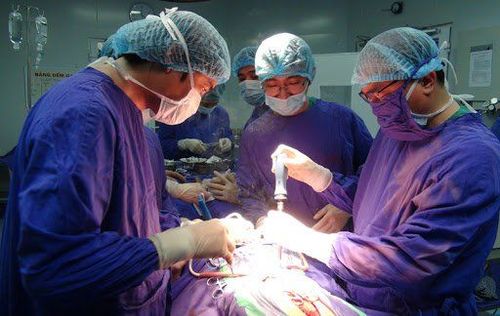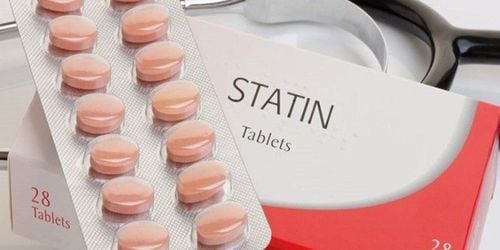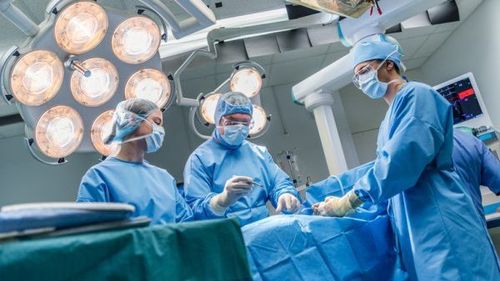This is an automatically translated article.
The article was written by Specialist Doctor II Nguyen Quoc Viet - Interventional Cardiologist - Department of Medical Examination & Internal Medicine, Vinmec Danang International General Hospital.When one or more coronary arteries are narrowed or blocked, the doctor performs angioplasty and percutaneous coronary stenting to re-circulate the blocked coronary artery. The procedure takes about an hour, the patient is anesthetized at the puncture site and is fully awake. After the procedure, the patient can be discharged from the hospital in 1-2 days.
1. Intervention for coronary stent placement like?
When performing the procedure, the doctor anesthetizes the puncture site (radial or femoral artery), inserts a sheath, and then inserts the catheter to the coronary artery. After determining the exact location of the stenosis or blockage, the doctor puts a small catheter with a balloon at the tip of the tube to the blockage / stenosis, the doctor inflates the balloon to enlarge it, forming a "tunnel" "wide enough to facilitate stenting through the narrow site. The doctor then continues to insert a metal stent (stent) to the narrowed coronary artery. When the occlusion is reached, the balloon is inflated to widen the lumen and placed in the metal bracket in the correct position, in order to restore the 'openness' of the coronary lumen as before the stenosis.
Thus, coronary artery dilation and stenting are often included in the same procedure.
Today, doctors rarely perform dilation alone without placing stents at the dilation site, except for a few cases such as: the blocked artery is too small (usually < 2mm in diameter), or The blocked segment is long, tortuous, heavily calcified, unable to bring the stent to the position to be placed.

However, whether performing angioplasty alone or angioplasty and coronary stenting, patients need to fully comply with the treatment regimen, diet, and exercise as directed by the specialist doctors. .
2. After stent placement, how is the treatment?
After angioplasty and coronary stent placement, the patient should fully comply with the instructions of the specialist.
Patients who have had coronary stents need to take a full and correct medication regimen to ensure that there is no acute thromboembolism in the stent in the early days and to prevent the risk of re-stenosis at the site of insertion. stents and re-infarction in the remaining coronary arteries. It is necessary to take long-term medication as prescribed by a cardiologist. Smoking should be stopped because nicotine in cigarettes constricts blood vessels, damages the entire vascular system, increases the process of atherosclerosis, causes narrowing of stents and coronary sites. other. Quitting smoking is the best way to reduce your risk of coronary heart disease events. How to exercise after stenting: Lifestyle changes are an important part of treatment. Exercise is essential and follows the principle of starting slowly and increasing gradually to achieve the right level of exertion. Diet is also an important factor in treatment: Good food for patients after coronary artery stenting should ensure nutrition, but do not contain too much harmful fat. The total amount of fat consumed during the day should not be more than 25-35%. It is necessary to limit harmful fats such as saturated fat, cholesterol (found in fat, skin, viscera of animals, red meats, egg yolks, shrimp...), trans fats (found in many foods). packaged foods, fast foods and processed foods). Increase beneficial fats are unsaturated fats found in olive oil, fish and nuts such as walnuts, almonds... They can help lower blood LDL -c, lower blood pressure, limit blood pressure, and reduce cholesterol. prevent atherosclerosis and bring many benefits to patients with coronary artery disease. In addition, it is necessary to limit salt, carbohydrates (sugar, starch) and eat more fiber and fresh fruits.
At Vinmec Da Nang International General Hospital, with a team of specialists with many years of experience in specialized fields, with complete and modern specialized equipment.
Cathlab room with state-of-the-art equipment such as DSA angiography machine, meeting the requirements of coronary angiography and intervention with the most modern minimally invasive techniques.
Inpatient area with a completely separate disease prevention system, full of supporting equipment and facilities.
The clinic is also equipped with state-of-the-art cardiac diagnostic equipment such as 2D and 3D echocardiography machines with full features of transesophageal and chest wall ultrasound, electrocardiogram machine, blood pressure Holter machine, electric Holter machine. electrocardiogram , stress electrocardiogram machine...
Please dial HOTLINE for more information or register for an appointment HERE. Download MyVinmec app to make appointments faster and to manage your bookings easily.














